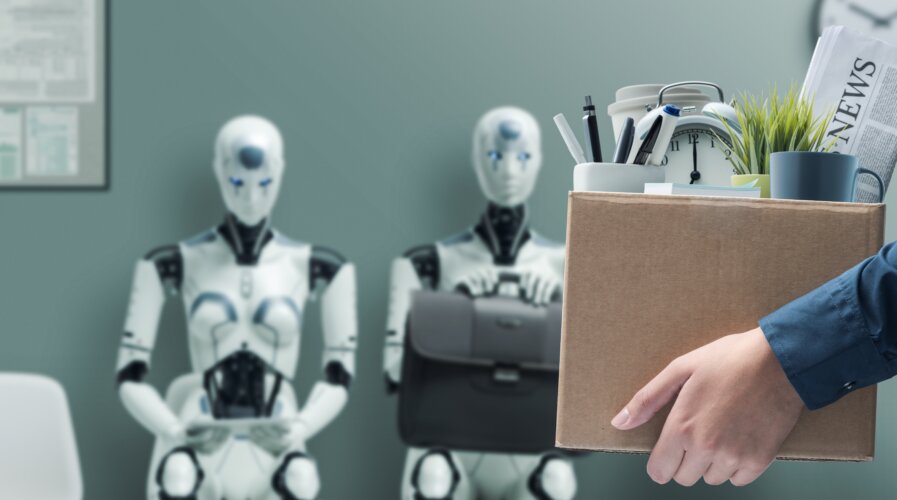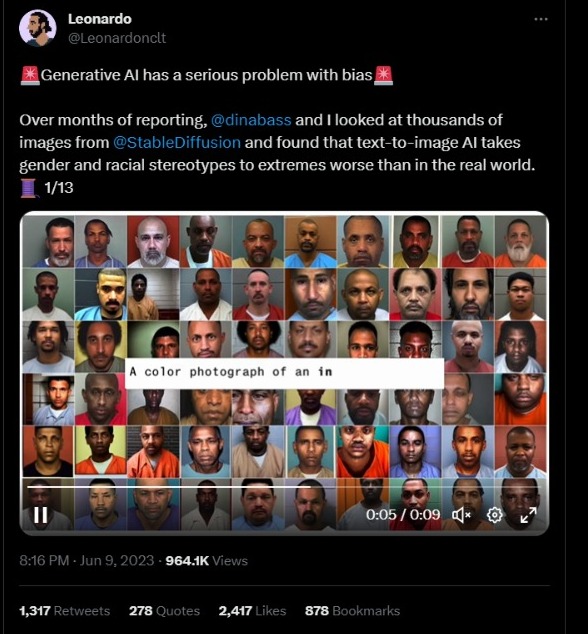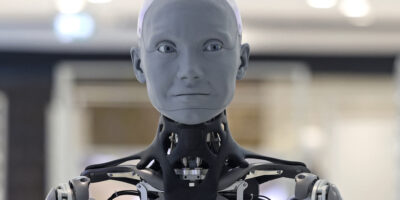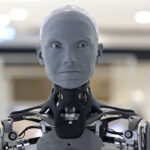
While AI is currently less capable than people, there is absolutely no denying that alongside the growing amount of disadvantages, people are also worried of losing their jobs.Source: Shutterstock
The disadvantages of AI
- Among the disadvantages of AI is the perpetuation of bias
- There are potential risks associated with using AI to protect the environment.
There have been countless discussions on the disadvantages of AI. A simple search online will quickly direct you to articles that discuss the risks that have arrived, the ones that will occur in months or years to come, and purely hypothetical dangers.
It is essential to understand what artificial intelligence (AI) really is. It’s a field that combines computer science and data to solve problems. AI also encompasses sub-fields of machine learning and deep learning.
Those disciplines consist of AI algorithms that seek to create expert systems to make predictions or classifications based on input data. There is, therefore, no denying that AI holds great promise. It can improve efficiency, cut costs, and accelerate research and development.
According to a forecast by technology research firm IDC, global spending on AI, including software, hardware, and services for AI-centric systems, will reach US$154 billion this year, an increase of 26.9% over 2022. Applications for this technology are growing and we’re just starting to explore the possibilities.
The disadvantages of AI
Loss of jobs
As with any booming technology, AI has its drawbacks. As it grows more capable, its advantages will inevitably be tempered with worries that these complex, opaque systems may do more societal harm than economic good. Most AI naysayers also point out the elephant in the room: “What impact will the AI revolution have on our jobs?”
While AI is currently less capable than people, many are still worried about losing their jobs. The BBC calls it the “AI Anxiety” in a report highlighting how the rapid growth in generative AI tools, such as OpenAI’s ChatGPT, and the overall progression of the “AI arms race” creates uncertainty for employees.

Source: AFP
In its latest report on The Future of Jobs, the World Economic Forum (WEF) predicts that there will be 69 million jobs by 2027 created by AI and 89 million jobs lost. But outside of job loss, which some experts see as revolutionizing the labor market, other AI disadvantages are apparent.
More AI hacking
As technology becomes ever more sophisticated, bad actors find new ways of exploiting vulnerabilities and gaining access to confidential information. In recent years, hackers have been upping the ante with the help of AI.
AI is used to automate cyberattacks, making it easier for hackers to identify and exploit vulnerabilities. This could include using AI to develop malware that can evade traditional security measures or AI-driven bots to launch distributed denial of service (DDoS) attacks.
Several high-profile data breaches have already occurred in which AI was used to expose vulnerable systems. In 2017, the WannaCry ransomware attack used AI to spread quickly across the globe, infecting over 230,000 computers in over 150 countries. Hackers used machine learning algorithms to identify and exploit vulnerable systems.
The SolarWinds hack in 2020 is one of the most recent examples of how AI-powered hackers can target routine software updates.
AI: A double edge sword in fighting climate change
The famous adage “with great power comes great responsibility” holds when it comes to AI, as its immense potential necessitates careful consideration. From predicting extreme weather events to optimizing renewable energy systems, AI is revolutionizing our approach to environmental sustainability.
A study conducted by the accounting firm PwC revealed that by 2030, AI could significantly reduce global greenhouse gas emissions by up to 4%. A separate 2022 BCG Climate AI Survey report finds that 87% of private and public sector chief executive officers (CEOs) with decision-making power in AI believe the tech is essential in the fight against climate change.
However, training large algorithms, such as deep learning models, involves processing vast amounts of data through complex mathematical calculations. These calculations require high-performance computing resources, including powerful processors and specialized hardware like graphics processing units (GPUs). As a result, training these models can consume significant amounts of energy, which can substantially impact the environment.
Data from the Massachusetts Institute of Technology found that the energy consumption associated with training a large algorithm can emit as much as 284,000 kg of carbon dioxide. The study found that training algorithms’ energy consumption and carbon footprints are likely to increase as the demand for AI applications grows.
AI is not necessarily a panacea for mitigating the effects of climate change, and there have to be active measures to minimize the ecological footprint of AI development and deployment.
Biased AI
Limited worldviews make bias an unavoidable part of life – especially online. These biases are reflected, even amplified, by AI.

In a New York Times article, an expert shared three root causes of bias in AI systems. “The first one is biases in the data. People are starting to research methods to spot and mitigate bias in data. For categories like race and gender, the solution is to sample better such that you get a better representation in the data sets,” Olga Russakovsky, an Assistant Professor of Computer Science at Princeton University, shared.
The second cause of bias, she said, is in the algorithms themselves which can amplify the bias in the data. “So you have to be thoughtful about how you build these systems,” she said, adding that the third cause would be human bias.
“We’re a fairly homogeneous population, so thinking broadly about world issues is a challenge. There are a lot of opportunities to diversify this pool, and as diversity grows, the AI systems themselves will become less biased,” Olga concluded.
Tackling bias in AI requires individuals, organizations, and government bodies to look at the root of the problem, which is often the people creating the AI services in the first place.
The advantages of AI in the work place and in society go beyond the disadvantages. But until some serious regulations are in place, the biggest disadvantage of AI will remain the fear it generates among its users.
READ MORE
- 3 Steps to Successfully Automate Copilot for Microsoft 365 Implementation
- Trustworthy AI – the Promise of Enterprise-Friendly Generative Machine Learning with Dell and NVIDIA
- Strategies for Democratizing GenAI
- The criticality of endpoint management in cybersecurity and operations
- Ethical AI: The renewed importance of safeguarding data and customer privacy in Generative AI applications


